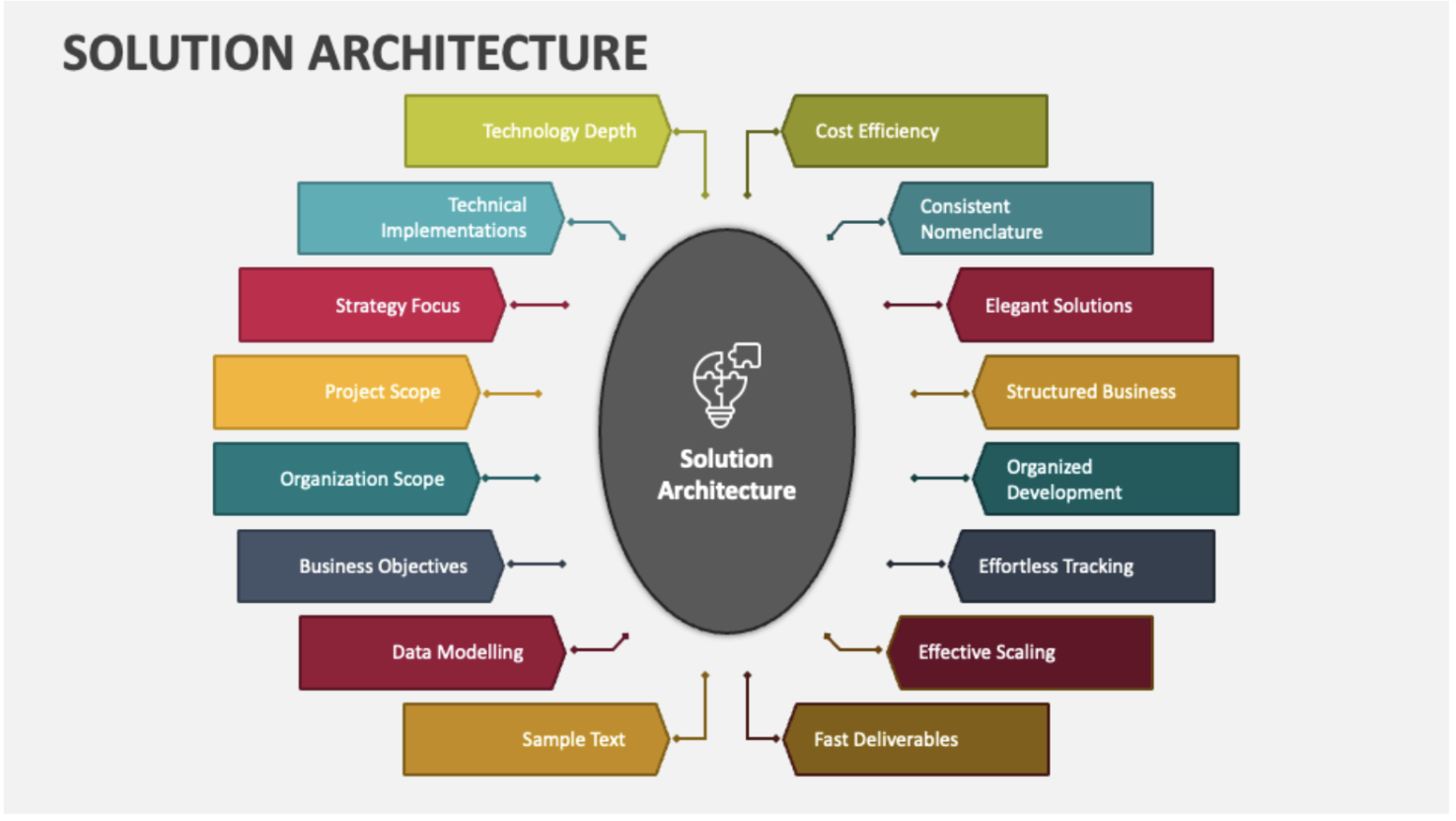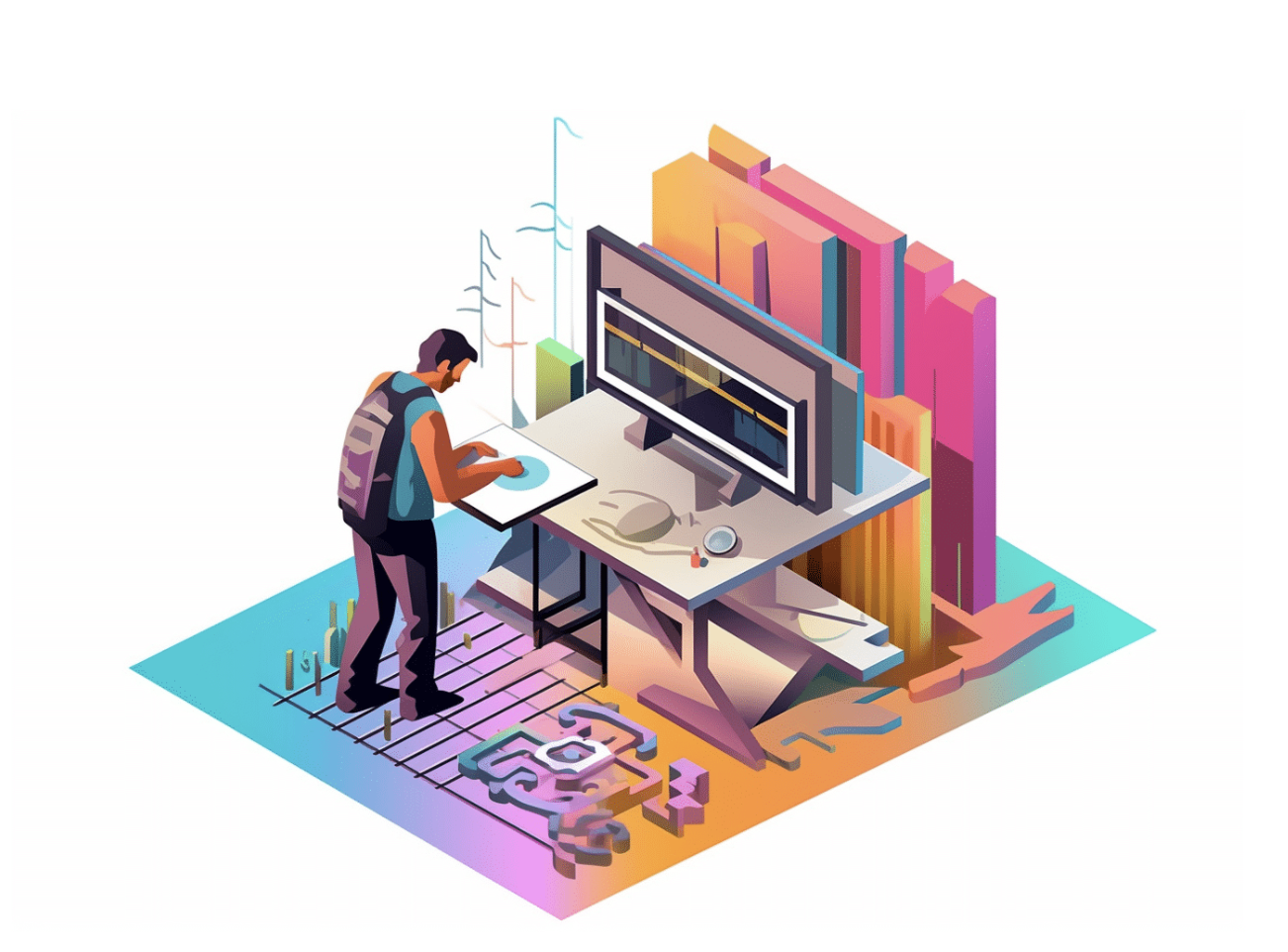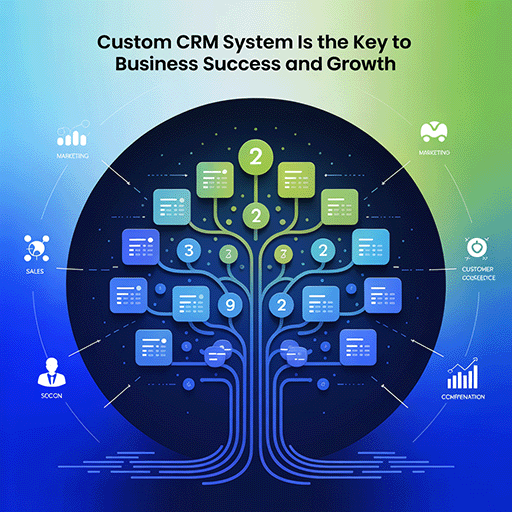Imagine a scenario in which a tech company is about to launch its boldest product yet, a product meant to disrupt the market and set a standard within the industry. The vision is clear, the dev team is in place, and resources are already allocated. However, how do you ensure that the existing systems intermingle without a hitch with the fresh new technology? Who creates a bridge between business goals and tech execution? Enter the solution architect, who plays a central role in IT today.
Why is this role more important now than before?
- By 2032, the demand for solution architects is projected to grow by 4.8%.
- Over 170,000 active job openings for solution architects exist in the USA alone.
- Such organizations like Amazon, IBM, and Microsoft list several hundred openings for solution architects.
The role of solution architects allows organizations to thrive in the digital age by upgrading legacy systems and guaranteeing scalability for whatever the future may hold. This guide outlines what solution architects do, the skills they need to possess, and how they act as a bridge between business and technology teams.
Who Is a Solution Architect?

Let’s begin with the concept of software architecture. Software architecture is when technological solutions are designed, described, and managed to ensure they can match individual business requirements and needs. Here’s an example: Your future platform will accept, manage, and store huge sets of customer/client data. The core requirement for your solution is to be able to protect this data—this is the business issue.
To meet the requirements and solve the issue, your team has to develop a solution architecture to help your business decide on the technology and software type to build. In practice, it’s not the entire team of software developers who work out the architecture. It’s the role of a solution architect.
What is a solution architect? A solution architect is a senior member of a development team who establishes the technical vision for a digital project, evaluates business processes and needs, and supports them with technical architecture. Solution architects are middlemen between the team (technical) and the client (business). By knowing the languages of both sides, the solution architect assists in merging gaps between them.
A solution architect is an invaluable part of any digital project. In today’s software development world, they typically play the most critical role: designing, implementing, supporting, and growing complex architectures.
In 2025, solution architects are in great demand:
- From 2018 to 2028, the anticipated growth rate of solutions architect job titles will be 3%.
- From 2023 to 2033, the projected number of new jobs for architects will reach 3,300.
- There are 107,000+ active job openings in the USA alone for this position.
- In the USA alone, there are 153,000+ architects employed.
Understanding your business problems requires an architect. This is when business stakeholders have to deal with one of the following cases:
- Your team has doubts regarding optimal technology solutions for the company’s digital environment.
- There’s no link between a future project and the existing architecture of the enterprise.
- You are focusing on a digital transformation of your business and need to have the value of your products and services reviewed.
- You’re looking for ways to mitigate project risks and prevent emergencies that your non-technical stakeholders cannot foresee.
- The project has technical and non-technical teams that find it difficult to work together, and you need someone who can act as a bridge between them.
- Your system is expected to have advanced functionality, and you need high-level control in addition to ordinary project management.
An architect for your solution is a person with hands-on experience who can mitigate most risks and ensure that your software will serve across business units effectively and smoothly.
What Are the Solution Architect Must-Have Skills?
If you don’t have a relevant technical person in-house, you should consider recruiting one before a single line of code is written. A proficient candidate should have a rich set of specific skills, including a deep understanding of software architecture, strong communication skills, business perception, and technical leadership.
The list of must-have technical skills for this role covers:
- Knowledge about the life cycle of software development and solution delivery for different systems (mobile, web, cloud-based, client-server).
- Profound knowledge of development platforms, modern technologies, and architectural models to design, describe, and implement solutions to meet business objectives.
- Outstanding analytical and problem-solving skills, including the ability to examine and break down complex business, functional, and non-functional requirements and single out matching languages, libraries, servers, etc.
- Robust interpersonal and communication solution architect skills are among the most sought-after. Architects ensure a connection between business and technical environments to effectively communicate with developers, CEOs, and other stakeholders.
- Proficiency in working with cross-functional teams and collaborating with various departments to guarantee a productive development process.
- Knowledge of the project manager’s work is one of the core skills for solution architects. This includes best practices and management tools that help them effectively coordinate the development process and team.
- A sharp eye for detail and dedication to ongoing project improvement, ensuring that the solution meets the security, scalability, and performance requirements.
Roles and Responsibilities of a Solution Architect
Let’s check the roles and responsibilities of a solution architect in more detail.
Solution Architect Roles
According to the solution architect description, the roles of this tech team expert vary depending on the industry they work in (architectures of fintech projects are totally different from those for healthcare, for example) and the type of organization. Here is a general list of roles:
- Understanding and examining core and secondary business goals by working with end users and business stakeholders.
- Designing the architecture of technical solutions (software, hardware, network elements).
- Measuring diverse technology options, the latest trends, and solution architect tools to define the best match for software systems.
- Guaranteeing solution trustworthiness and scalability to meet both current and future needs of a business.
- Determining and handling technical and compliance risks to guarantee that the new digital project meets the business’s requirements and standards.
- Communicating with business executives and stakeholders, software developers, and project managers to make sure all teams involved are on the same page.
- Delivering post-deployment maintenance and support to troubleshoot issues and conduct necessary existing environment upgrades.
- Inspecting project boundaries and offering alternatives, reducing risks, and running process reengineering

Solution Architect Responsibilities
There are many key solution architect responsibilities that you need to pay attention to before hiring one. Below, see the overall list of what an architect is responsible for.
Understanding the Needs and Objectives of a Business
The number one responsibility of a software solution architect is to understand the business, its needs, objectives, and issues. By doing this, a good solution architect can build a solution that aligns with the company’s goals and moves it forward. Their technical expertise and ability to build relevant solutions make the architect an indispensable part of engineering teams.
Coordinating with Stakeholders
Technical and business teams often lack understanding of project vision and implementation. A technical team speaks the language of code, libraries, and servers. They are focused on the process that leads to the result. A business team focuses only on the result and has little understanding of the code or architecture. They are more interested in meeting business needs than considering how to do so. Architects are intermediaries between both teams. They adapt to and balance the interests of both, cultivating collaboration and ensuring seamless execution.
Analyzing Legacy Systems and Finding Ways for Improvements
It’s no secret that big enterprises are afraid to explore new software solutions, considering the age of their current systems and the huge amounts of data stored in them. Such systems serve across company units and departments, and switching to a new solution inevitably disrupts the work of the whole company. System architects can analyze existing software, detect improvement areas, and list possible modifications that are usually implemented without process disruptions.
Write Technical Documentation and Drawing Diagrams
An architect must ensure the team and stakeholders clearly understand the solution’s nuances. For this, an architect writes technical documentation. On the one hand, it gives a better picture of the solution and how it will operate. On the other hand, the documentation streamlines solution implementation and drives project success.
Supervising Software Implementation and Integration
An architect’s key responsibility is supervising the implementation and integration of the solution’s overall technical vision. Solutions architects ensure that the solution smoothly fits within the enterprise architecture and fulfills the objectives. The architect participates in realizing planned outcomes and offers guidance throughout the development process.
Estimating Outcomes
It’s the architect’s responsibility to estimate outcomes. For this, they analyze diverse aspects, including project timelines, predicted returns, budget, etc. They also combine a thorough knowledge of the solution’s potential and feasibility. Through estimation, they safeguard the whole project and ensure it remains within the time and cost constraints while still aligning with the business’s strategic objectives.

Real-World Case Studies: The Impact of Solution Architects Across Industries
1. Healthcare
Healthcare providers may struggle with decentralized patient data and compliance issues. By appointing a solution architect, the organization implements an integrated data management system that securely connects health professional departments and aligns with applicable laws, such as HIPAA. The result? Faster access to patient information and better decision-making. Here are the most significant cybersecurity challenges healthcare organizations face.
2. E-commerce
Retail platforms may suffer performance issues during seasonal sales events because of their inability to scale their Infrastructure on time. A solution architect can build a cloud-based, scalable system to handle traffic spikes without dynamic performance degradation. This way, there are no server crashes, and this can assist the company in converting sales at a higher pace during high-demand times.
3. Fintech
Fintech companies are concerned about cybersecurity threats while developing a secure digital payment solution. The solution architect can create an architecture leveraging advanced encryption protocols and fraud detection algorithms. The result would be a highly secure and scalable payment system that gains the trust of both customers and regulatory agencies.
These instances demonstrate the role of solution architects in driving business success by designing tailored solutions, mitigating risks, and ensuring scalable and secure operations.
How to Become a Solution Architect
There’s no one-size-fits-all career path for a solution architect. Most future architects begin with a software engineering or project management environment, where they learn the basics, develop needed skills, and proceed with their careers.
It requires a Bachelor’s degree in Information Technology and Systems, Computer Science, Computer Engineering, or Electrical Engineering. However, one can also earn a Master’s degree without first earning a Bachelor’s degree. This requires a strong professional background, equivalent experience, and credentials.
A future solution architect should have 6+ years of practical experience across domains (real estate, healthcare, fintech, e-commerce, etc.) and work experience as an informational systems expert or a network administrator. An MBA in IT would help accelerate the career path of a solution architect.
In practice, people with 5–10 years of hands-on experience in IT and the knowledge of tools for solution architects can pursue a role as solution architect (SA).
Note: Even with relevant experience, joining fintech or healthcare projects may be complicated because of their complexity and very strict requirements. Those pursuing an SA role start off with e-learning software architecture and tech stack for real estate and e-commerce projects.
Emerging Trends Shaping the Role of Solution Architects
There are many trends and changes that influence the role of a solution architect due to technological upsurges and the ever-changing needs of the business:
-
Artificial Intelligence (AI) and Machine Learning (ML)
With AI and ML deployment increasing across different industries, solution architects are responsible for and key enablers of using these technologies in business solutions. AI solutions, ranging from predictive analytics to automated customer support, require thoughtful architecture for scalability and ethical data use.
-
Cloud Computing and Hybrid Solutions
As more companies move to cloud environments, solution architects are designing hybrid solutions that balance on-premises and cloud-based services. They ensure seamless integration, cost efficiency, and data security in multi-cloud environments.
-
Cybersecurity Challenges
Given the increase in the number of cyber threats, security must be baked into the designs from the beginning. This presents a tremendous opportunity for solution architects to overshadow authentication mechanisms comprising encryption protocols and robust access control measures used for protection.
-
Edge Computing
While solution architecture is making waves in business, edge computing is making waves due to the requirement for rapid data processing near the source. Solution architecture designs are now geared toward systems spread across edge devices to enhance data transmission speeds and improve real-time decision-making.
-
Sustainability and Green IT
Environmental consciousness has led solution architects to consider energy-efficient solutions, including infrastructure designs that promote a lower carbon footprint without affecting operational efficiency.
By anticipating these trends, solution architects continue to play a vital role in concocting innovative, secure, and scalable solutions to accelerate business growth and add success to the era of business.
Bottom Line
SAs always bring the expertise to solve business problems and match current objectives. They know how to optimize legacy systems, write technical documentation, coordinate a product team and stakeholders, choose a matching technology stack, oversee the implementation process, and foresee issues. The role of a solution architect is instrumental. It leads to building the solution that helps achieve goals within the timelines and budgets.
If you are looking for a development team managed by a solution architect, contact our representative. Let’s discuss your business objectives and how we can help you reach them.
FAQs
How does a solution architect differ from a software architect?
While both work on system design in various capacities, the solution architect is concerned with the overall business solution, integrating software, hardware, and networks to achieve particular business goals. The software architect is an expert in ensuring servers, security, databases, website applications, and other relevant stakeholders work together to produce what is needed for the user experience, ensuring sound functionality, scalability, and maintainability.
What certification is worth aspiring for in pursuit of a career as a solution architect?
Some certifications that are well thought out are:
- TOGAF (The Open Group Architecture Framework)—an internationally recognized certification for enterprise and solution architects;
- AWS Certified Solutions Architect—for those involved in a cloud-based environment;
- Microsoft Certified: Azure Solutions Architect Expert—best for people involved in designing cloud solutions using Microsoft Azure;
- Certified SAFe Architect—invaluable for architects working in Agile development environments.
What industries generally require a solution architecture?
The demand for solution architects spans across almost all industries, including:
- Healthcare: Design secure systems that comply with data regulations;
- E-commerce: They provide scalable platforms addressing high transaction volumes;
- Fintech: They develop secure and compliant financial solutions;
- Telecommunications and Manufacturing: Integrating IoT and automation solutions.
What other skills should solution architects possess?
They should possess the technical and soft skills as follows:
- They have a good understanding of system architecture, cloud technologies, and software development life.
- Ability to communicate and negotiate to align technical teams and business teams.
- Ability to solve problems analytically to provide custom enterprise solutions.
How does one become a solution architect?
Typically, solution architects have prior experience as software developers, project managers, or network administrators. They primarily developed their skills while handling software design, systems integration, and project leadership before becoming solution architects. A background in computer science or IT is an added asset and a faster-track one.





